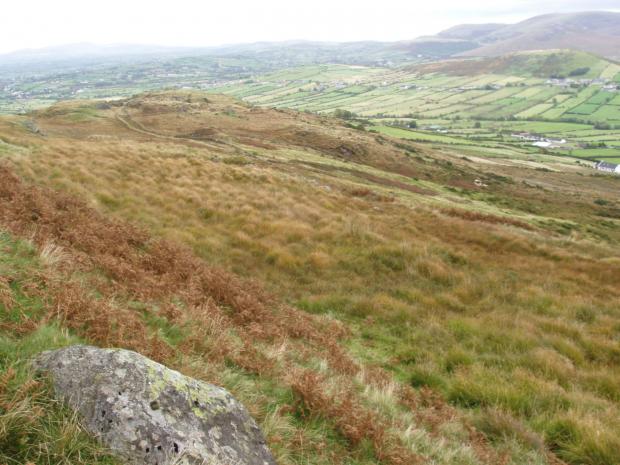
Gruggandoo is a special place because of its Earth Science interest. The area provides access to important rocks in the Western Mournes area.
The rocks are igneous, that is they formed from molten magma deep beneath the Earth’s crust. They date from the Palaeogene period of Earth history and are some 56 million years old.
The Western Mournes are younger in age than the Eastern Mournes, and are mostly made up of two types of granite. More importantly however, is the presence at Gruggandoo of another type of igneous rock called granophyre, which has a different appearance and is found as a particular structure in the site.
The granophyre is part of what is called a cone sheet. This structure actually surrounds most of the whole of the Mournes Mountains, but at Gruggandoo it can be seen to be cut off by the granite. This is the only place in the Mournes that this can be seen at the surface.
This is important as it shows the cone sheet was there before the granite, helping geologists work out the order the rocks formed in and when they intruded the Earth’s crust.
Related articles
- ASSI Guidance for Public Bodies/Competent Authorities
- Coastal Areas of Special Scientific Interest
- Conservation Management Plans (CMPs)
- European Marine Sites - Marine Special Areas of Conservation and Special Protection Areas
- Introduction to Conservation Management Plans (CMPs) for Northern Ireland’s Special Areas of Conservation
- Marine Conservation Zones
- Marine Protected Areas
- Marine Ramsar sites
- Special Areas of Conservation
- Special Areas of Conservation for Harbour porpoise
- Special Protection Areas
